Cloud-based healthcare framework for real-time anomaly detection and classification of 1-D ECG signals
- PMID: 36574391
- PMCID: PMC9794080
- DOI: 10.1371/journal.pone.0279305
Cloud-based healthcare framework for real-time anomaly detection and classification of 1-D ECG signals
Abstract
Real-time data collection and pre-processing have enabled the recognition, realization, and prediction of diseases by extracting and analysing the important features of physiological data. In this research, an intelligent end-to-end system for anomaly detection and classification of raw, one-dimensional (1D) electrocardiogram (ECG) signals is given to assess cardiovascular activity automatically. The acquired raw ECG data is pre-processed carefully before storing it in the cloud, and then deeply analyzed for anomaly detection. A deep learning-based auto-encoder(AE) algorithm is applied for the anomaly detection of 1D ECG time-series signals. As a next step, the implemented system identifies it by a multi-label classification algorithm. To improve the classification accuracy and model robustness the improved feature-engineered parameters of the large and diverse datasets have been incorporated. The training has been done using the amazon web service (AWS) machine learning services and cloud-based storage for a unified solution. Multi-class classification of raw ECG signals is challenging due to a large number of possible label combinations and noise susceptibility. To overcome this problem, a performance comparison of a large set of machine algorithms in terms of classification accuracy is presented on an improved feature-engineered dataset. The proposed system reduces the raw signal size up to 95% using wavelet time scattering features to make it less compute-intensive. The results show that among several state-of-the-art techniques, the long short-term memory (LSTM) method has shown 100% classification accuracy, and an F1 score on the three-class test dataset. The ECG signal anomaly detection algorithm shows 98% accuracy using deep LSTM auto-encoders with a reconstructed error threshold of 0.02 in terms of absolute error loss. Our approach provides performance and predictive improvement with an average mean absolute error loss of 0.0072 for normal signals and 0.078 for anomalous signals.
Copyright: © 2022 Nawaz, Ahmed. This is an open access article distributed under the terms of the Creative Commons Attribution License, which permits unrestricted use, distribution, and reproduction in any medium, provided the original author and source are credited.
Conflict of interest statement
The authors have declared that no competing interests exist.
Figures
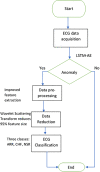









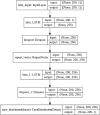




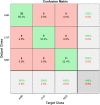

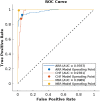
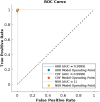

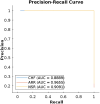
Similar articles
-
Arrhythmia detection using deep convolutional neural network with long duration ECG signals.Comput Biol Med. 2018 Nov 1;102:411-420. doi: 10.1016/j.compbiomed.2018.09.009. Epub 2018 Sep 15. Comput Biol Med. 2018. PMID: 30245122
-
A new approach for arrhythmia classification using deep coded features and LSTM networks.Comput Methods Programs Biomed. 2019 Jul;176:121-133. doi: 10.1016/j.cmpb.2019.05.004. Epub 2019 May 10. Comput Methods Programs Biomed. 2019. PMID: 31200900
-
Machine learning based hybrid anomaly detection technique for automatic diagnosis of cardiovascular diseases using cardiac sympathetic nerve activity and electrocardiogram.Biomed Tech (Berl). 2023 Oct 12;69(1):79-109. doi: 10.1515/bmt-2022-0406. Print 2024 Feb 26. Biomed Tech (Berl). 2023. PMID: 37823386
-
A Review of Signal Processing Techniques for Electrocardiogram Signal Quality Assessment.IEEE Rev Biomed Eng. 2018;11:36-52. doi: 10.1109/RBME.2018.2810957. Epub 2018 Feb 28. IEEE Rev Biomed Eng. 2018. PMID: 29994590 Review.
-
Application of deep learning techniques for heartbeats detection using ECG signals-analysis and review.Comput Biol Med. 2020 May;120:103726. doi: 10.1016/j.compbiomed.2020.103726. Epub 2020 Apr 8. Comput Biol Med. 2020. PMID: 32421643 Review.
Cited by
-
A convolutional autoencoder framework for ECG signal analysis.Heliyon. 2025 Jan 2;11(2):e41517. doi: 10.1016/j.heliyon.2024.e41517. eCollection 2025 Jan 30. Heliyon. 2025. PMID: 39897815 Free PMC article.
-
Non-Invasive Biosensing for Healthcare Using Artificial Intelligence: A Semi-Systematic Review.Biosensors (Basel). 2024 Apr 9;14(4):183. doi: 10.3390/bios14040183. Biosensors (Basel). 2024. PMID: 38667177 Free PMC article. Review.
-
Research on a Lightweight Arrhythmia Classification Model Based on Knowledge Distillation for Wearable Single-Lead ECG Monitoring Systems.Sensors (Basel). 2024 Dec 10;24(24):7896. doi: 10.3390/s24247896. Sensors (Basel). 2024. PMID: 39771635 Free PMC article.
References
-
- Yeasmin S. (2019). Benefits of artificial intelligence in medicine. ICCAIS 2019; 1–6.
-
- Chauhan S, Vig L. (2015). Anomaly detection in ECG time signals via deep long short-term memory networks. 2015 IEEE international conference on data sciences and advanced analytics DSAA 2015.
MeSH terms
LinkOut - more resources
Full Text Sources
Other Literature Sources
Medical
Research Materials

